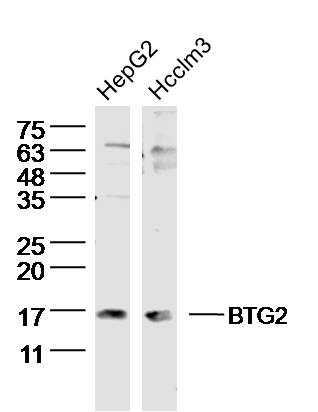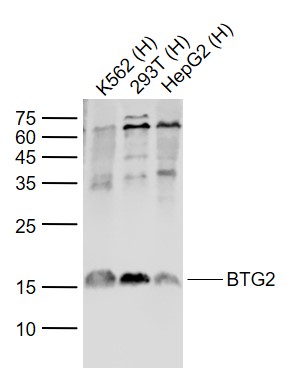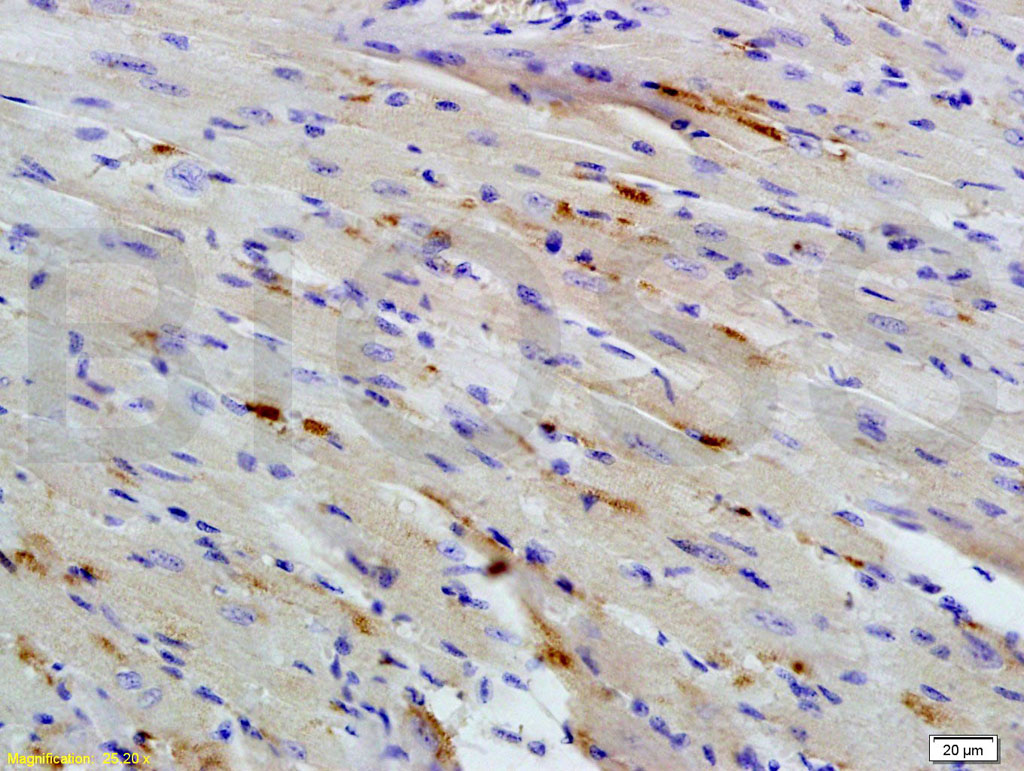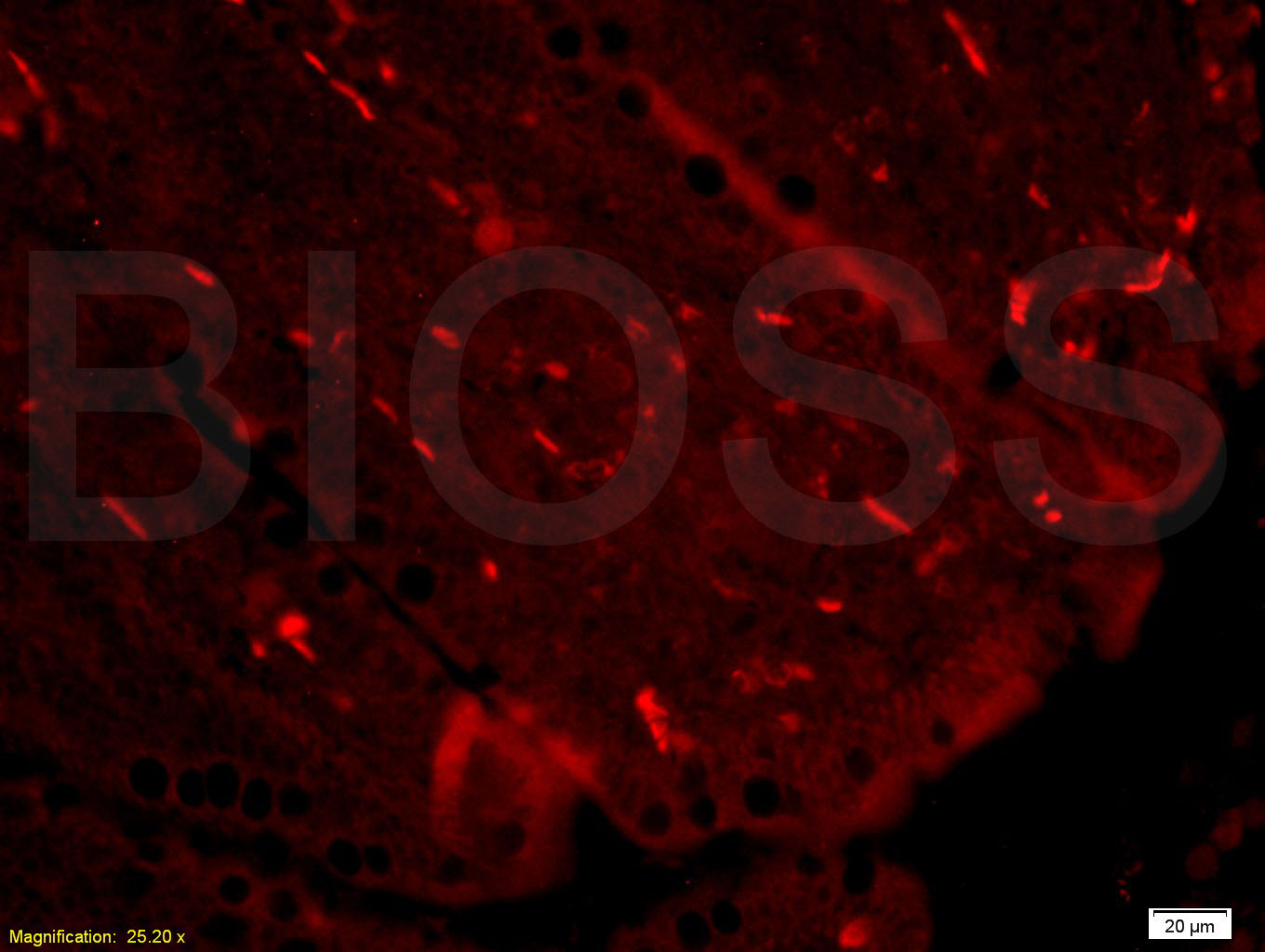
Rabbit Anti-BTG2 antibody
BTG2_HUMAN; Protein BTG2; BTG family member 2; NGF-inducible anti-proliferative protein PC3; pheochromacytoma cell-3; nerve growth factor-inducible anti-proliferative; B-cell translocation gene 2; BTG2; TIS21; PC3; TIS21.
View History [Clear]
Details
Product Name BTG2 Chinese Name B细胞迁移基因2抗体 Alias BTG2_HUMAN; Protein BTG2; BTG family member 2; NGF-inducible anti-proliferative protein PC3; pheochromacytoma cell-3; nerve growth factor-inducible anti-proliferative; B-cell translocation gene 2; BTG2; TIS21; PC3; TIS21. literatures Research Area Cell biology Chromatin and nuclear signals Neurobiology Apoptosis Immunogen Species Rabbit Clonality Polyclonal React Species Human, Mouse, (predicted: Rat, Pig, Rabbit, Guinea Pig, ) Applications WB=1:500-2000 ELISA=1:5000-10000 IHC-P=1:100-500 IHC-F=1:100-500 IF=1:100-500 (Paraffin sections need antigen repair)
not yet tested in other applications.
optimal dilutions/concentrations should be determined by the end user.Theoretical molecular weight 17kDa Cellular localization Secretory protein Form Liquid Concentration 1mg/ml immunogen KLH conjugated synthetic peptide derived from human BTG2: 31-110/158 Lsotype IgG Purification affinity purified by Protein A Buffer Solution 0.01M TBS(pH7.4) with 1% BSA, 0.03% Proclin300 and 50% Glycerol. Storage Shipped at 4℃. Store at -20 °C for one year. Avoid repeated freeze/thaw cycles. Attention This product as supplied is intended for research use only, not for use in human, therapeutic or diagnostic applications. PubMed PubMed Product Detail BTG2 is a member of the BTG/Tob family. This family has structurally related proteins that appear to have antiproliferative properties. BTG2 is involved in the regulation of the G1/S transition of the cell cycle. It modulates transcription regulation mediated by ESR1(referenced from Entrez Gene). BTG2 expression is induced in vivo during neurogenesis, and the gene is transiently expressed in vitro in rat pheochromocytoma PC12 cells after induction of neuronal differentiation by addition of nerve growth factor (NGF); suggesting that BTG2 is functionally significant during the neuronal differentiation process (PMID: 12360398).
Function:
Anti-proliferative protein; the function is mediated by association with deadenylase subunits of the CCR4-NOT complex. Activates mRNA deadenyltion in a CNOT6 and CNOT7-dependent manner. In vitro can inhibit deadenylase activity of CNOT7 and CNOT8. Involved in cell cycle regulation. Could be involved in the growth arrest and differentiation of the neuronal precursors. Modulates transcription regulation mediated by ESR1. Involved in mitochondrial depolarization and neurite outgrowth.
Subunit:
Interacts with PRKCABP. Interacts with CNOT7 and CNOT8; indicative for an asscociation with the CCR4-NOT complex. Interacts with PIN1, inducing mitochondrial depolarization.
Post-translational modifications:
Phosphorylated at Ser-147 by MAPK1/ERK2 and MAPK3/ERK1, and at Ser-149 by MAPK14, leading to PIN1-binding and mitochondrial depolarization.
Similarity:
Belongs to the BTG family.
SWISS:
P78543
Gene ID:
7832
Database links:Entrez Gene: 7832 Human
Omim: 601597 Human
SwissProt: P78543 Human
Unigene: 519162 Human
Product Picture
HepG2 (human)cell Lysate at 40 ug
Hcclm3 (human)cell Lysate at 40 ug
Primary: Anti- BTG2 (SL0031R)at 1/300 dilution
Secondary: IRDye800CW Goat Anti-Rabbit IgG at 1/20000 dilution
Predicted band size: 17kD
Observed band size: 17 kD
Sample:
Lane 1: K562 (Human) Cell Lysate at 30 ug
Lane 2: 293T (Human) Cell Lysate at 30 ug
Lane 3: HepG2 (Human) Cell Lysate at 30 ug
Primary: Anti-BTG2 (SL0031R) at 1/1000 dilution
Secondary: IRDye800CW Goat Anti-Rabbit IgG at 1/20000 dilution
Predicted band size: 17 kD
Observed band size: 16 kD
Tissue/cell: mouse heart tissue; 4% Paraformaldehyde-fixed and paraffin-embedded;
Antigen retrieval: citrate buffer ( 0.01M, pH 6.0 ), Boiling bathing for 15min; Block endogenous peroxidase by 3% Hydrogen peroxide for 30min; Blocking buffer (normal goat serum,C-0005) at 37℃ for 20 min;
Incubation: Anti-BTG2 Polyclonal Antibody, Unconjugated(SL0031R) 1:200, overnight at 4°C, followed by conjugation to the secondary antibody(SP-0023) and DAB(C-0010) staining
Tissue/cell: mouse small intestine tissue;4% Paraformaldehyde-fixed and paraffin-embedded;
Antigen retrieval: citrate buffer ( 0.01M, pH 6.0 ), Boiling bathing for 15min; Blocking buffer (normal goat serum,C-0005) at 37℃ for 20 min;
Incubation: Anti-BTG2 Polyclonal Antibody, Unconjugated(SL0031R) 1:200, overnight at 4°C; The secondary antibody was Goat Anti-Rabbit IgG, Cy3 conjugated(SL0295G-Cy3)used at 1:200 dilution for 40 minutes at 37°C. DAPI(5ug/ml,blue,C-0033) was used to stain the cell nuclei
Partial purchase records(bought amounts latest0)
No one bought this product
User Comment(Total0User Comment Num)
- No comment






 +86 571 56623320
+86 571 56623320




